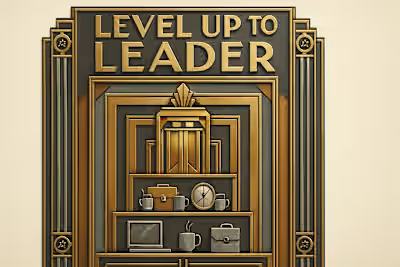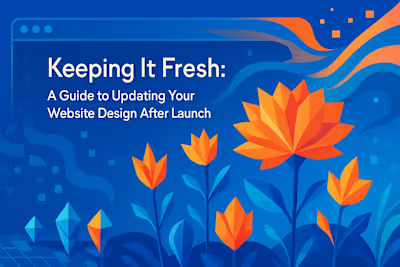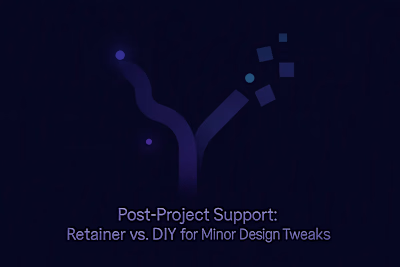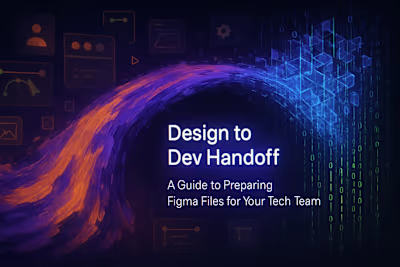Beyond the Gig: How to Retain Great Designers and Build a Long-Term Partnership
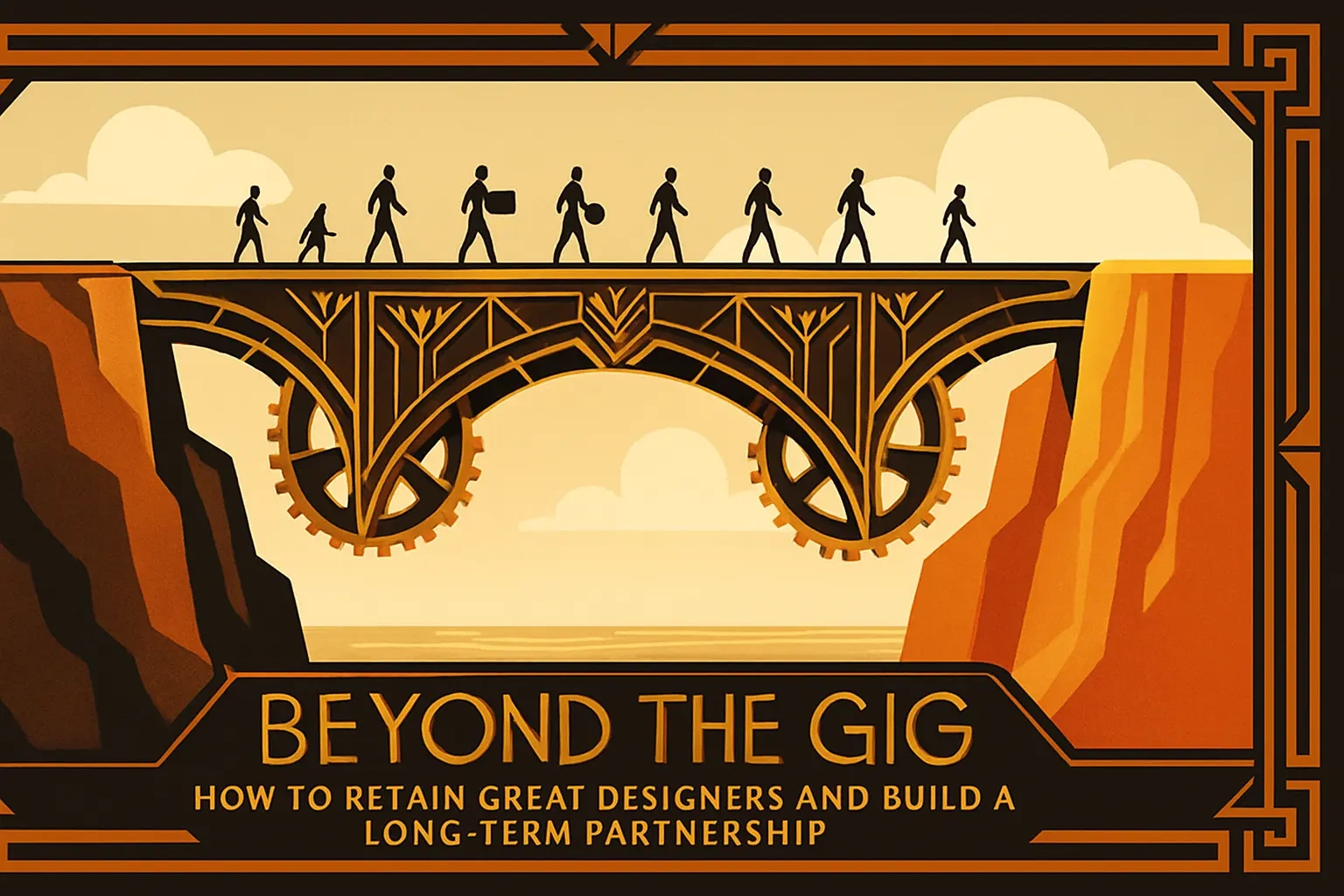
Beyond the Gig: How to Retain Great Designers and Build a Long-Term Partnership
The 'Why': Benefits of a Long-Term Design Partnership
Deeper Brand and Product Knowledge
Increased Efficiency and Speed
Guaranteed Quality and Consistency
The 'How': Keys to Retaining Top Freelance Talent
Communicate Clearly and Respectfully
Treat Them Like a Partner, Not a Temp
Pay Fairly and Promptly
Provide a Steady Stream of Work
References
Beyond the Gig: How to Retain Great Designers and Build a Long-Term Partnership
You've just completed a successful project with a fantastic Figma designer. They understand your brand, deliver high-quality work, and communicate effectively. Why start the search all over again for the next project? Retaining a great designer saves you time and money and leads to better, more consistent work. This is especially true when you're focused on keeping your design fresh with regular updates.
Finding talented designers isn't the hard part anymore. You can easily hire Figma designers on various platforms. The real challenge? Keeping the good ones around. A key part of fostering this relationship is providing excellent feedback and writing a review that counts. Let's explore how to turn that one-off project into a lasting partnership that benefits everyone involved.
The 'Why': Benefits of a Long-Term Design Partnership
Understanding the value of retention is the first step. It's not just about convenience; it's a strategic advantage that can transform your business.
Think about it this way. Every time you bring on a new designer, you're starting from scratch. You explain your brand values, share your style guide, and hope they "get it." But when you work with the same designer over time, something magical happens. They become an extension of your team, anticipating your needs before you even voice them.
Deeper Brand and Product Knowledge
A long-term designer develops a deep understanding of your brand's nuances, audience, and goals. This institutional knowledge leads to more strategic design decisions and less time spent on briefing.
Remember your first project together? You probably spent hours explaining your brand personality, target audience, and design preferences. Maybe you shared dozens of reference images and went through multiple rounds of revisions. That's normal for a first project. But imagine if you had to do that every single time you needed design work.
When a designer sticks around, they absorb your brand DNA. They know that your audience prefers clean, minimalist layouts. They remember that your CEO hates the color orange. They understand why your product screenshots always need to show the mobile version first. This knowledge accumulates over time, creating a shared language between you and your designer.
I've seen this play out countless times. A startup I know worked with the same designer for three years. By year two, their briefs went from five-page documents to simple Slack messages. The designer could take a rough sketch and turn it into exactly what the founder envisioned. That's the power of accumulated knowledge.
Increased Efficiency and Speed
With each project, the designer becomes more familiar with your workflow, communication style, and expectations. This eliminates the learning curve, leading to faster turnarounds and a smoother process.
Speed matters in today's market. When you need a landing page for tomorrow's product launch, you don't have time to onboard someone new. A designer who knows your systems can jump right in. They already have access to your brand assets. They know which stakeholders need to approve designs. They understand your revision process.
The time savings are real and measurable. First projects often take twice as long as they should. There's back-and-forth about file formats, confusion about feedback channels, and misunderstandings about deadlines. But by the third or fourth project? Everything flows smoothly.
One marketing director told me their design turnaround time dropped by 40% after six months with the same freelancer. That's not because the designer worked faster. It's because they eliminated all the friction that comes with unfamiliarity. No more explaining that "ASAP" in your company means within 48 hours. No more confusion about whether rough concepts need color or not. The designer just knows.
Guaranteed Quality and Consistency
Working with the same designer ensures a consistent visual language and quality standard across all your products and marketing materials. This builds a stronger, more recognizable brand.
Brand consistency isn't just about using the right logo. It's about maintaining a cohesive visual story across every touchpoint. When you work with different designers for each project, you risk creating a fragmented brand experience. One designer might interpret your "modern and approachable" brief as bright and playful. Another might see it as clean and professional.
Long-term designers become guardians of your brand consistency. They notice when a new social media template doesn't quite match your website's visual hierarchy. They flag when a proposed color combination might confuse customers who associate specific colors with certain product tiers. They ensure your startup's scrappy energy translates consistently whether it's a pitch deck or a billboard.
This consistency builds trust with your audience. Customers recognize your content instantly in their crowded feeds. Investors see a company that pays attention to details. Your team feels proud sharing materials that always look polished and professional.
The 'How': Keys to Retaining Top Freelance Talent
Great designers have options. To keep them coming back, you need to be a great client. Here's how to build a relationship that lasts.
The freelance design market is competitive. Talented designers can pick and choose their clients. If you want to keep working with the best, you need to stand out as a client worth keeping. This isn't about grand gestures or excessive praise. It's about creating a working relationship built on mutual respect and clear expectations.
Communicate Clearly and Respectfully
Clear, consistent, and respectful communication is the foundation of any good relationship. Provide detailed briefs, give constructive feedback, and be responsive to their questions.
Good communication starts before the project even begins. Share your goals, not just your requirements. Instead of saying "I need a homepage redesign," explain why you need it. Are conversions dropping? Is the current design not mobile-friendly? Understanding the 'why' helps designers create solutions, not just pretty pictures.
When giving feedback, be specific and actionable. "I don't like it" helps no one. Try "The headline feels too small compared to our competitor's sites. Can we test a larger font size?" This shows respect for their expertise while clearly communicating your needs.
Response time matters too. Designers often juggle multiple clients and projects. When they reach out with a question, try to respond within 24 hours. Quick responses keep projects moving and show you value their time. Set expectations upfront about your availability. If you're traveling or in back-to-back meetings, let them know.
I've noticed the best client-designer relationships have a rhythm to their communication. Weekly check-ins, clear feedback windows, and defined approval processes. This predictability helps both parties plan their time and reduces stress.
Treat Them Like a Partner, Not a Temp
Respect their expertise and their process. Involve them in strategic discussions and treat them as a valued member of the team. This fosters a sense of ownership and commitment.
Too many companies treat freelancers like order-takers. They hand over specifications and expect pixel-perfect execution. But great designers are strategic thinkers. They solve problems, not just push pixels. When you treat them as partners, you unlock their full potential.
Invite your designer to strategy meetings. Share your product roadmap. Ask for their input on user experience challenges. When they understand the bigger picture, they make better design decisions. They might suggest consolidating three landing pages into one powerful experience. Or recommend A/B testing a design element you hadn't considered.
Recognition goes a long way. When the new website design increases conversions, tell your designer. Share the impact of their work. Include them in team celebrations, even if they're remote. Small gestures like adding them to your company's "About" page or crediting them in project launches show you value their contribution.
One founder I know includes their long-term freelance designer in quarterly planning sessions. The designer's outside perspective often sparks innovative solutions the internal team missed. That designer has now been with them for five years, turning down full-time offers from other companies.
Pay Fairly and Promptly
This is non-negotiable. Pay market rates for their skills and, most importantly, pay your invoices on time. Timely payments build trust and show you value their work.
Money conversations can feel awkward, but they're crucial for healthy working relationships. Start by researching market rates for designers with similar experience in your area. Don't try to lowball because they're freelance. Remember, freelancers cover their own benefits, taxes, and business expenses.
Payment timing might be the single most important factor in freelancer retention. Nothing damages a relationship faster than late payments. Set up systems to ensure invoices get paid within your agreed terms. If your company typically pays in 30 days, tell designers upfront. Better yet, negotiate shorter payment terms for freelancers who rely on steady cash flow.
Consider offering multiple payment options. Some designers prefer project-based pricing. Others like hourly rates. For ongoing work, monthly retainers provide predictable income. Be flexible and find what works for both parties.
One smart approach I've seen: automatic payments. Set up recurring payments for retainer clients. Pay project milestones immediately upon approval. These systems remove friction and show professionalism. Your designer spends less time chasing payments and more time creating great work.
Provide a Steady Stream of Work
The best way to retain a freelancer is to give them consistent work. If you know you'll have ongoing design needs, discuss a retainer agreement or give them a heads-up about upcoming projects to keep them in your pipeline.
Freelancers value stability. While they chose the freelance life for flexibility, most appreciate knowing where next month's income will come from. If you have regular design needs, communicate that early. Even if you can't guarantee specific hours, sharing your anticipated needs helps designers plan.
Retainer agreements work well for both parties. You get priority access to your designer's time. They get predictable income. Start small with a few hours per month and adjust based on actual usage. Be realistic about your needs. Overestimating wastes money. Underestimating leaves you scrambling for additional help.
When you don't have immediate work, stay in touch. Send a quick email about upcoming projects. Share interesting design articles. Comment on their portfolio updates. These small touchpoints keep the relationship warm. When you need them again, they're more likely to have availability.
Project planning makes a huge difference. Instead of random urgent requests, batch your design needs. Plan quarterly design sprints. Schedule regular website updates. This predictability helps designers allocate time for your projects while serving other clients.
Building a long-term partnership with a designer isn't complicated. It requires the same ingredients as any good relationship: respect, communication, and mutual benefit. When you find a designer who understands your vision and delivers quality work, invest in that relationship. The returns compound over time.
Your next great design might come from someone you already know. That designer who knocked your last project out of the park? They're probably hoping you'll reach out again. Make that call. Start building a partnership that could transform your business's visual presence for years to come.
Remember, the best time to strengthen a designer relationship is right after a successful project. The work is fresh, the communication channels are open, and both parties are feeling positive. Don't let that momentum fade. Schedule your next project, set up a retainer, or simply send a thank-you note with a promise to be in touch soon.
Great design partnerships don't happen by accident. They're built through intentional actions, consistent communication, and mutual respect. Start building yours today.
References
Like this project
Posted Jul 6, 2025
Finding a great freelance designer is hard. Losing them is worse. Learn the keys to retaining top talent and turning a one-off project into a valuable, long-term partnership.






